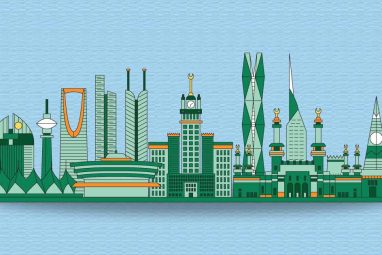Modernising Checkout Models Can Win Customers
With customer expectations regarding services soaring high in 2022, it has become necessary for applications to offer clean and fast checkout experiences. Imagine a customer placing an order on an online platform – she immediately expects the chime on mail confirming the order or an SMS doing the same. But, if that does not happen […]
Topics
What to Read Next
- Martechvibe Launches the Marquee Awards to Celebrate Breakthrough Digital Campaigns
- Top Marketers 4X More Likely to Use AI, Consolidate Tech
- Roku and iSpot Bring Outcome-Based Optimisation to Streaming
- PMG Expands Influencer Marketing Capabilities with Acquisition of Digital Voices
- PayPal Ads Launches Transaction Graph Insights & Measurement

With customer expectations regarding services soaring high in 2022, it has become necessary for applications to offer clean and fast checkout experiences.
Imagine a customer placing an order on an online platform – she immediately expects the chime on mail confirming the order or an SMS doing the same. But, if that does not happen within seconds, the customer might veer towards another platform to make a purchase.
According to UX organisation Baymard Institute, 69.82 per cent of shopping carts are abandoned mid-shopping because the checkout processes are complicated.
Customers’ expectations with regards to service have become higher in 2022. It has become imperative for brands to devise methods to meet these expectations, especially with the rise of omnichannel retail, in which a service is present physically as well as across channels. The wide expanse of presence could include ecommerce, social stores, their own website and more. These services need to be in sync and yet architecturally separate to upgrade.
This can be facilitated by digital tools or applications. They empower the customer experience – like communication or checkout experience through crucial features.
For instance, in a recent trend, a lot of companies are doing away with compulsory registration and allowing guest checkout. American decor store Cart and Barrel uses this technique. They allow users to create an account after they have made the purchase. This measure fulfils digital marketers’ need for data without infringing on customer experience.
For such features to be introduced, an application should be modern as well. In this regard, it is integral to remember that a host of information-technology products have a life cycle of not more than five years.
When technology becomes old, its capacity takes a downward stride and can create disruptions in a business. Ageing legacy applications can affect customer experience, which can influence their opinion about the particular brand or service.
Application modernisation involves picking up existing legacy applications and revamping their platform infrastructure, internal architecture and features. They enable retailers to gather data from both store and online transactions that take place during checkouts.
Modernising an application should also involve integrating technologies such as artificial intelligence and machine learning. When people talk about modernisation, they generally are pointing at shifting traditional applications to cloud environments.
Then, there are containers – cloud-centric techniques meant for operating the applications and managing the workloads.
Revamping of applications could also delve into the microservices area. It involves decoupling an application into smaller pieces that can be deployed and updated independently instead of having a single codebase, also known as monoliths.
Amazon’s shift to microservices is perhaps a good example to illustrate the benefit of this modernising technique. In 2001, the retail website was a monolithic application with interconnected services. It meant that a developer had to untangle dependencies to upgrade services.
While decoupling, the developers pulled out the code that served a single purpose in the web interface. Thus, there was a single service for the buy button for a modernised checkout, product page and so on. This allowed the teams to look at development choke-points at every level and resolve issues efficiently. The testimony of how well the independent features have worked lies in Amazon’s growth over two decades.
However, after upgrading, it is crucial to ensure that the applications are performing. Because a subpar performance can have a negative impact on the business. Today, everybody has a decent Android and an iPhone. And, if an application fails to perform on these devices, they would want to know the reason behind it.
Such a challenge can be stalled by adopting application performance management solutions that can survey the functioning of the apps. It can give retailers a glimpse into issues that the customers are dealing with and they can also test their solutions. These automated systems can also save a lot of revenue that goes into ensuring checks and balances.
The other benefits
- New revenue streams: While modernising an app, a business can create new processes or services for the customers. This can potentially generate new revenue.
- Fosters creation of new features and services: New features can be aligned to trends so that a legacy application can continue to provide value. These features can be personalised and blended with the current state of operations and future goals.
- Employees’ productivity may improve: Developers and administrative employees are perhaps optimally productive when they have technology handy that can eliminate tedious chores. Application modernisation can be used to help automate tasks and eliminate repetitive processes, allowing employees to use their time more effectively.
Challenges of modernisation
The challenges typically exist with respect to the cost and complexity of the migration. Taking it to the cloud from the traditional environment by solely investing – and not factoring in returns – may prove to be counterproductive.
There could be some instances that an application may be so in sync with the existing systems that the complexity of modernising them may seem like an uphill task.
The cost also increases for architectural reasons. It is expensive to add features since most of the application’s components are often packed together. Moreover, if one feature of the app is a problem, it becomes necessary to scale up the entire system so that it remains in harmony.
Conclusion
Modernised applications need to be linked to other technologies throughout the organisation for optimal performance and to impart the best experience for the customers – right from when they use your service to checkout. Modernising application, optimisation, and employee satisfaction can help a retail organisation scale immensely.
If you liked reading this, you might like our other stories
How Do You Use Data To Improve CX?
Is Your CX Program Falling Short?









































































































